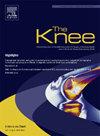Total knee arthroplasty in hemophilic knees requires its own learning phase: Lessons learned from 90 cases
IF 1.6
4区 医学
Q3 ORTHOPEDICS
引用次数: 0
Abstract
Background
Intraoperative challenges and complications and their course over experience in total knee arthroplasty (TKA) applications in hemophilic arthropathy have seldom been studied. Our study aimed to analyze the learning dynamics and the evolving perspective of a single arthroplasty surgeon in hemophilic knees.
Methods
The study encompassed all primary TKAs performed on hemophilic patients by a single experienced arthroplasty surgeon from May 2002 to October 2023. A total of 90 knees from 63 patients were included in the final analysis. Demographic characteristics, range of motion (ROM), degree of flexion contracture, and hip–knee angle (HKA) were noted. Anesthesia type, tourniquet duration, surgical approach, need for bone graft use, and lateral retinacular release (LRR) were also documented. Cases were categorized into three groups: the initial 30 cases (Group A), the subsequent 30 cases (Group B), and the final 30 cases (Group C).
Results
All groups were homogenous in terms of age (P = 0.102), HKA (P = 0.696), ROM (P = 0.582), and degree flexion contracture (P = 0.546). Extended approaches were needed in seven cases (23.3%) in Group A, and in two cases (6.7%) in Group B. There was no need for extended exposure in Group C. LRR application rate and tourniquet time showed no differences across groups (P = 0.401, P = 0.482). The intraoperative problem rate exhibited a statistically significant decrease throughout the series (P = 0.016).
Conclusions
Arthroplasty in hemophilic knees poses unique challenges which require their own learning process. Intraoperative complication rate and need for utilizing extended approaches decreases after the initial 30 cases and decreases further after the subsequent 30 cases.
血友病膝关节的全膝关节置换术需要一个学习阶段:从 90 个病例中汲取的经验教训。
背景:在血友病关节病的全膝关节置换术(TKA)应用中,术中挑战和并发症及其随经验变化的过程很少被研究。我们的研究旨在分析一名关节置换外科医生在嗜血性膝关节病中的学习动态和不断变化的观点:研究涵盖了自2002年5月至2023年10月期间,由一名经验丰富的关节置换外科医生为嗜血患者实施的所有初次TKAs手术。共有 63 名患者的 90 个膝关节被纳入最终分析。研究人员注意到了患者的人口统计学特征、活动范围(ROM)、屈曲挛缩程度和髋膝角度(HKA)。此外,还记录了麻醉类型、止血带持续时间、手术方法、植骨需求和侧视网膜松解术(LRR)。病例分为三组:最初的 30 例(A 组)、随后的 30 例(B 组)和最后的 30 例(C 组):所有组别在年龄(P = 0.102)、HKA(P = 0.696)、ROM(P = 0.582)和屈曲挛缩程度(P = 0.546)方面均相同。A 组有 7 例(23.3%)需要延长入路,B 组有 2 例(6.7%)需要延长入路。在整个系列中,术中问题率出现了统计学意义上的显著下降(P = 0.016):血友病膝关节置换术带来了独特的挑战,需要一个学习过程。在最初的 30 例手术后,术中并发症发生率和使用扩展方法的需求有所下降,而在随后的 30 例手术后,这一比率会进一步下降。
本文章由计算机程序翻译,如有差异,请以英文原文为准。
求助全文
约1分钟内获得全文
求助全文
来源期刊

Knee
医学-外科
CiteScore
3.80
自引率
5.30%
发文量
171
审稿时长
6 months
期刊介绍:
The Knee is an international journal publishing studies on the clinical treatment and fundamental biomechanical characteristics of this joint. The aim of the journal is to provide a vehicle relevant to surgeons, biomedical engineers, imaging specialists, materials scientists, rehabilitation personnel and all those with an interest in the knee.
The topics covered include, but are not limited to:
• Anatomy, physiology, morphology and biochemistry;
• Biomechanical studies;
• Advances in the development of prosthetic, orthotic and augmentation devices;
• Imaging and diagnostic techniques;
• Pathology;
• Trauma;
• Surgery;
• Rehabilitation.
 求助内容:
求助内容: 应助结果提醒方式:
应助结果提醒方式:


